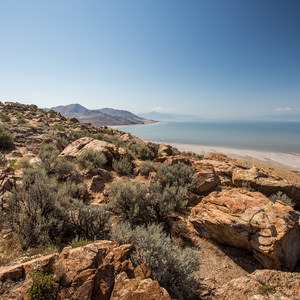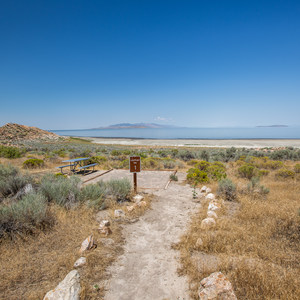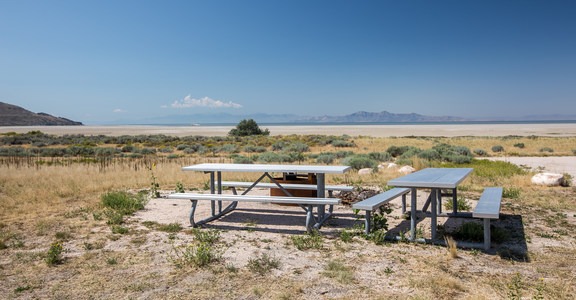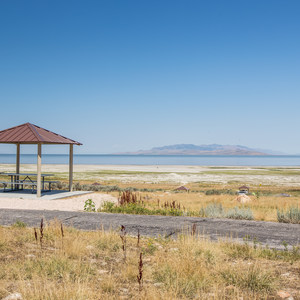A hike up Frary Peak on Utah’s Antelope Island is a trip full of geographic superlatives: Antelope Island is the largest island in the Great Salt Lake, which is the largest natural lake west of the Mississippi River. To top that off, Frary Peak is the highest point on Antelope Island, offering magnificent views in all directions, from the Great Salt Lake to the Wasatch Mountains and the Salt Lake City skyline. At 6,596 feet, the summit is not high compared to some of the peaks in the Wasatch or Oquirrhs, but it stands isolated in the middle of the Great Salt Lake, so the views are expansive and sweeping. This island has some unique geology, too, and it features some of the oldest rocks in Utah in its Farmington Canyon complex (about 1.7 billion years old, similar to rocks found at the bottom of the Grand Canyon).
Antelope Island’s most famous residents are its herd of bison—about 500 to 700 of the animals live here. The herd had its beginnings with twelve animals that were brought to the island by sailboat in 1893. Bison can be dangerous, so be sure to observe them from a safe distance. The island is also home to its namesake pronghorn antelope as well as mule deer and bighorn sheep.
From the trailhead, the route ascends open, grassy slopes toward the west. Gaining the ridge running north-south, the trail reaches a saddle and a junction with the Dooley Knob Spur trail at .79 miles. Take a left to continue toward Frary Peak as the trail climbs a ridge and the grade eases a bit. You'll pass a large talus slope on the left as the trail winds through some large boulders, passing through a tunnel-like gap between them. After climbing a series of switchbacks, the trail turns east for a short stretch to gain the main ridge of the island. The rest of the route mainly follows this ridge, but it drops down to the west as you approach the last stretch to the summit. At the top, enjoy 360-degree views and take a moment to sign the summit register.
In July of 2016, a wildfire triggered by lightning burned over 15,000 acres, about half of the island. While charred areas were obvious in early September, wildlife is already moving back into the burned areas, and reseeding efforts will help native grasses recover. The fire mainly affected the west side of the island.
With the exception of a few scraggly junipers near the summit, there is virtually no shade on this hike. With cooler temperatures in spring or fall, or on a sunny day during a winter dry spell, the hike is quite pleasant. Expect to take about four to five hours.































Comments
Sign In and share them.